The New Traffic Reality: How to Track & Grow Organic Visibility in a Zero-Click World
Organic visibility no longer guarantees traffic, and traditional metrics can't capture modern influence. In this Relato piece, we unpack how content teams can adapt to the zero-click era with smarter measurement and a broader, channel-driven strategy. Backed by platform trends and tactical examples, this is your playbook for staying visible when clicks disappear.
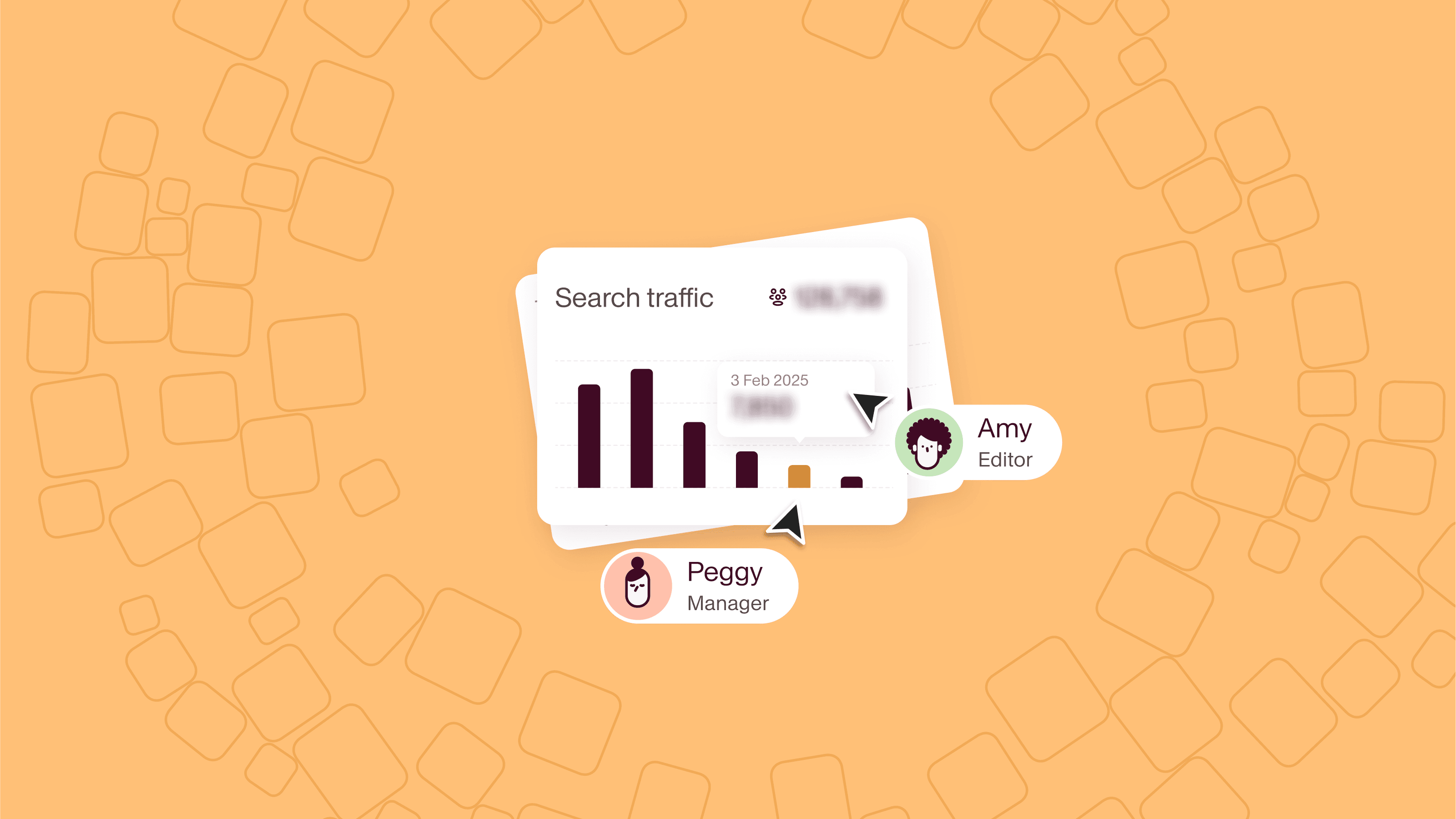
Search traffic is dropping across the board.
Content teams that once celebrated millions of monthly visitors now watch as those numbers shrink year over year.
This has happened to my projects, too. The transition hasn’t been easy (to say the least).
So, what’s going on?
We've entered the zero-click era: organic visibility no longer equals search traffic. And search traffic is no longer the only metric that matters.
But there are still plenty of ways to experiment with different channels, rethink measurement, and prove value when traditional metrics fail.
While most marketers panic, let’s dig into what works for organic visibility these days.
What is zero-click search?
Zero-click search is exactly what it sounds like: when someone searches for information but never clicks on any of the results.
Several factors are driving this shift:
- Google's expanding AI features generate answers to keep users on Google. Think AI Overviews and the new AI Mode.
- AI assistants like ChatGPT, Claude, and Perplexity answer user questions directly, often citing your content without sending traffic.
- Social platforms optimize their algorithms to keep users scrolling within their ecosystems rather than clicking out to external links.
This has a direct impact on the traffic we receive.
For example, Similarweb reports that zero-click searches grew from 56% to 69% between May 2024 and May 2025, following the launch of Google AI Overviews.
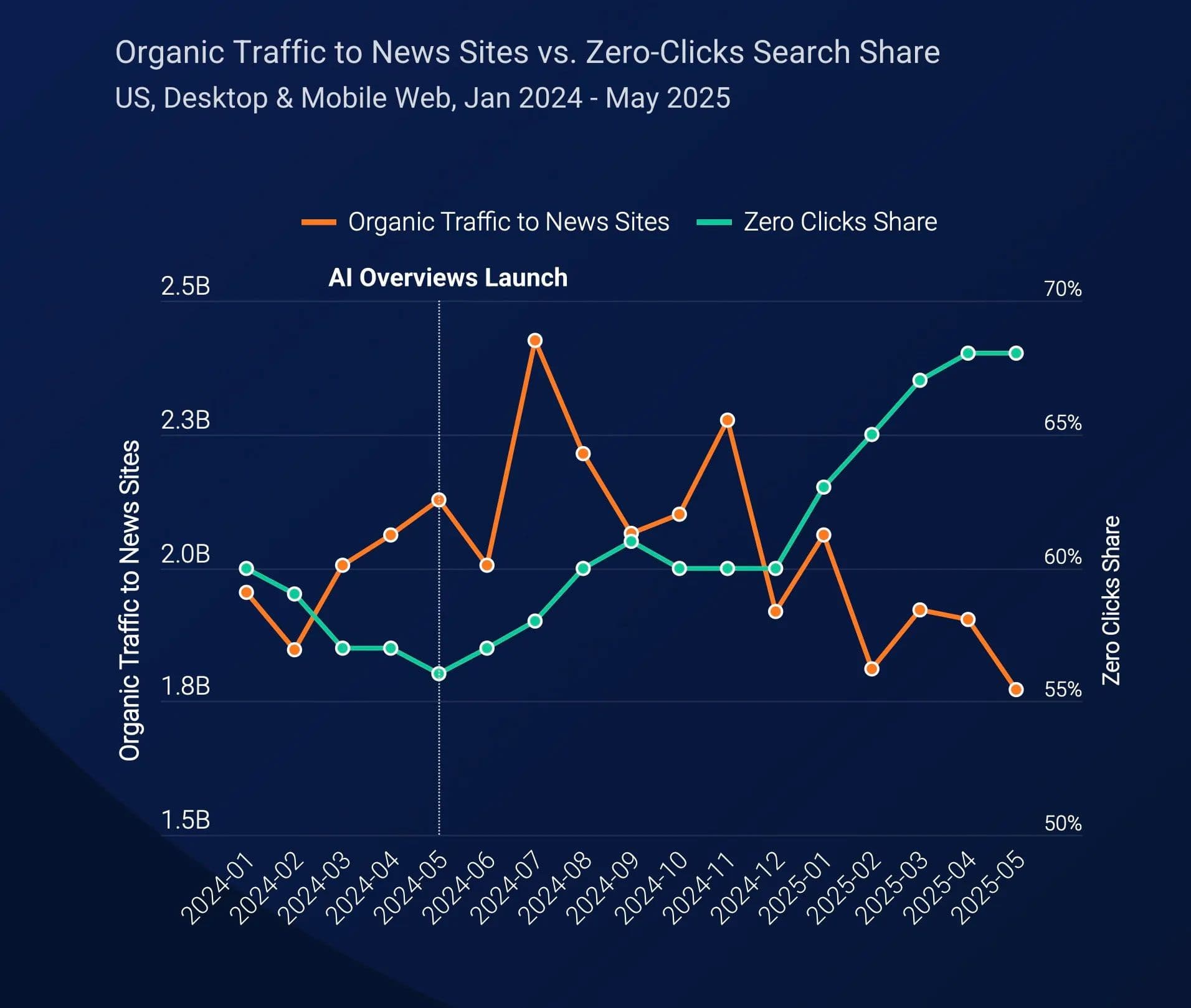
And I imagine that this trend will keep accelerating.
Rethinking how we measure visibility
The way we track organic marketing needs to transform along with user behavior. When most of your brand's visibility happens without a click, traditional analytics fall short.
To be completely honest?
It ignored how content builds brand awareness, creates trust, and influences decisions that happen much later in the funnel.
Now, we’re “forced” to change our approach — because a typical user journey might look like this:
- Someone reads about your product in a ChatGPT response
- They see your brand mentioned on Reddit or LinkedIn
- They bookmark your content without visiting your site
- Weeks later, they search directly for your brand name when they're ready to buy
So how do you capture that kind of influence?
Here are some metrics you might want to prioritize:
- Social media mentions: Use tools like Brand24 or Mention to track how often your brand gets referenced on social platforms. Each mention builds awareness that may later drive direct traffic or sales.
- Brand sentiment: The same tools can also analyze the emotional tone of brand mentions, helping you understand how people feel about your brand, not just how often they talk about it.
- Social media engagement: Track likes, comments, shares, and saves on your content. Higher engagement indicates content resonance and potential for organic distribution.
- Direct requests on social media: Tag and track incoming questions or information requests via social channels in your CRM. These direct inquiries show intent generated through organic awareness.
- AI share of voice: Use LLM tracking tools like the AI Toolkit to see how LLMs like ChatGPT mention your brand vs. competitors. This indicates visibility in the growing AI search ecosystem.
- Direct traffic correlation: Compare direct traffic patterns against your content calendar to spot spikes following marketing campaigns using tools like Google Analytics (GA4).
- Branded traffic: Track search traffic from queries that include your brand name using Google Search Console. Rising branded searches indicate awareness generated through other channels.
- Sales team attribution: Add specific questions to sales call templates about which content or marketing campaigns prospects engaged with before reaching out.
Tracking these metrics helps you capture the full spectrum of value your content creates.
And while stakeholders have traditionally asked for direct attribution ("traffic → conversion → sale"), the current reality requires us to rethink what success looks like.
Visibility channels that matter in the zero-click world
Let’s go over the channels that still work and bring results. Even if it’s not always just about website traffic and direct attribution.
1. Founder and employee content on LinkedIn
LinkedIn is quickly becoming a key channel for connecting with your B2B audience.
Speaking for myself, I’ve learned almost exclusively about business news and products on LinkedIn over the past year.
And personal content often outperforms company posts on this platform. People respond to real experiences and genuine opinions, not corporate messaging.
For example, David Baum’s post featuring my previous article for Relato got 165 likes and 13 comments — results that are often harder to achieve through the company page alone.
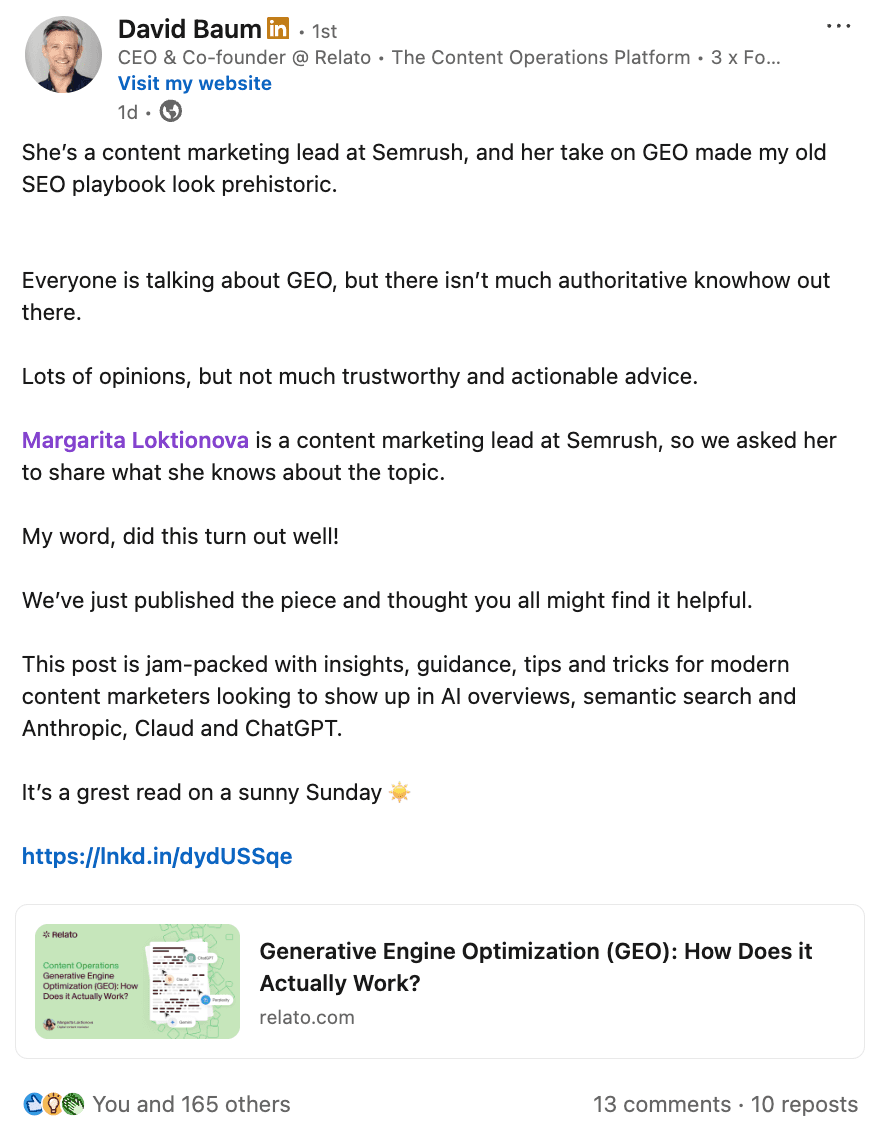
Here’s how you can make this work:
- Identify team members who enjoy sharing content and have original ideas
- Equip them with tools to create faster (like custom GPTs and Canva templates)
- Support their credibility by helping them land speaking gigs at events and on podcasts
The best part? It actually works. I’ve seen numerous posts from founders and experts sharing how LinkedIn drives the pipeline.
Just look at how Evan Knight talks about generating over $1 million in pipeline for his agency through LinkedIn.
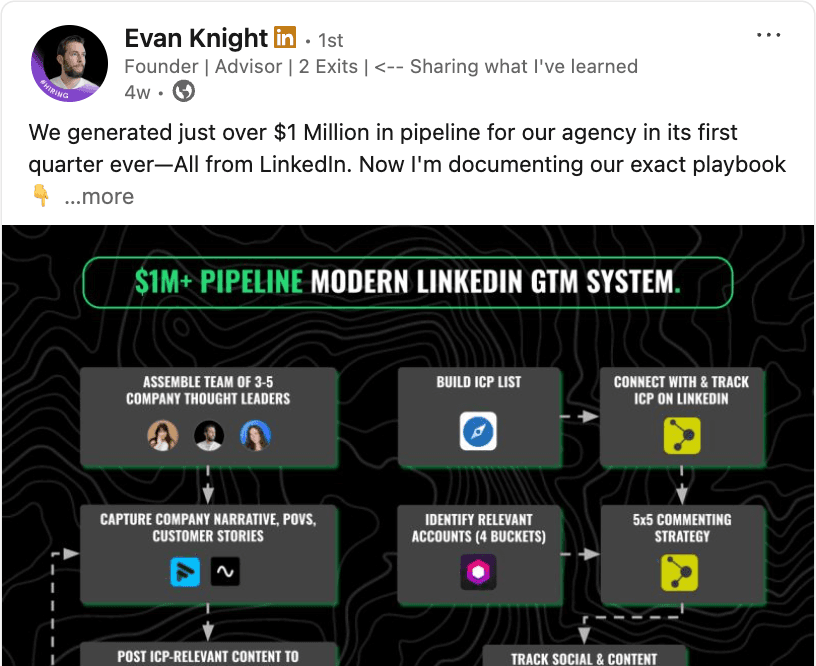
2. Reddit
Reddit builds awareness that directly influences purchase decisions. Even when users never visit your site.
It's now the sixth most visited website globally, with over 4.5 billion monthly visits (as of July 2025).
It also drives AI citations: for example, Reddit accounts for 46.7% of all Perplexity citations.
And unlike other platforms, content on Reddit sticks around. Popular threads can appear in search results for years.
Here's how B2B companies can leverage Reddit effectively:
Intelligence gathering
- Use tools like Reddit Pro Trends to track keywords and conversation volume
- Join industry-specific subreddits where your customers hang out (r/marketing, r/sales, r/SaaS) and use them to find content and product ideas
- Mine discussions for the exact language customers use to describe their problems
For example, I work on promoting Semrush’s AI Toolkit and want to understand how users track their presence in LLMs.
Simply searching “AI visibility tracking” on Reddit reveals specific questions people are asking about this topic.
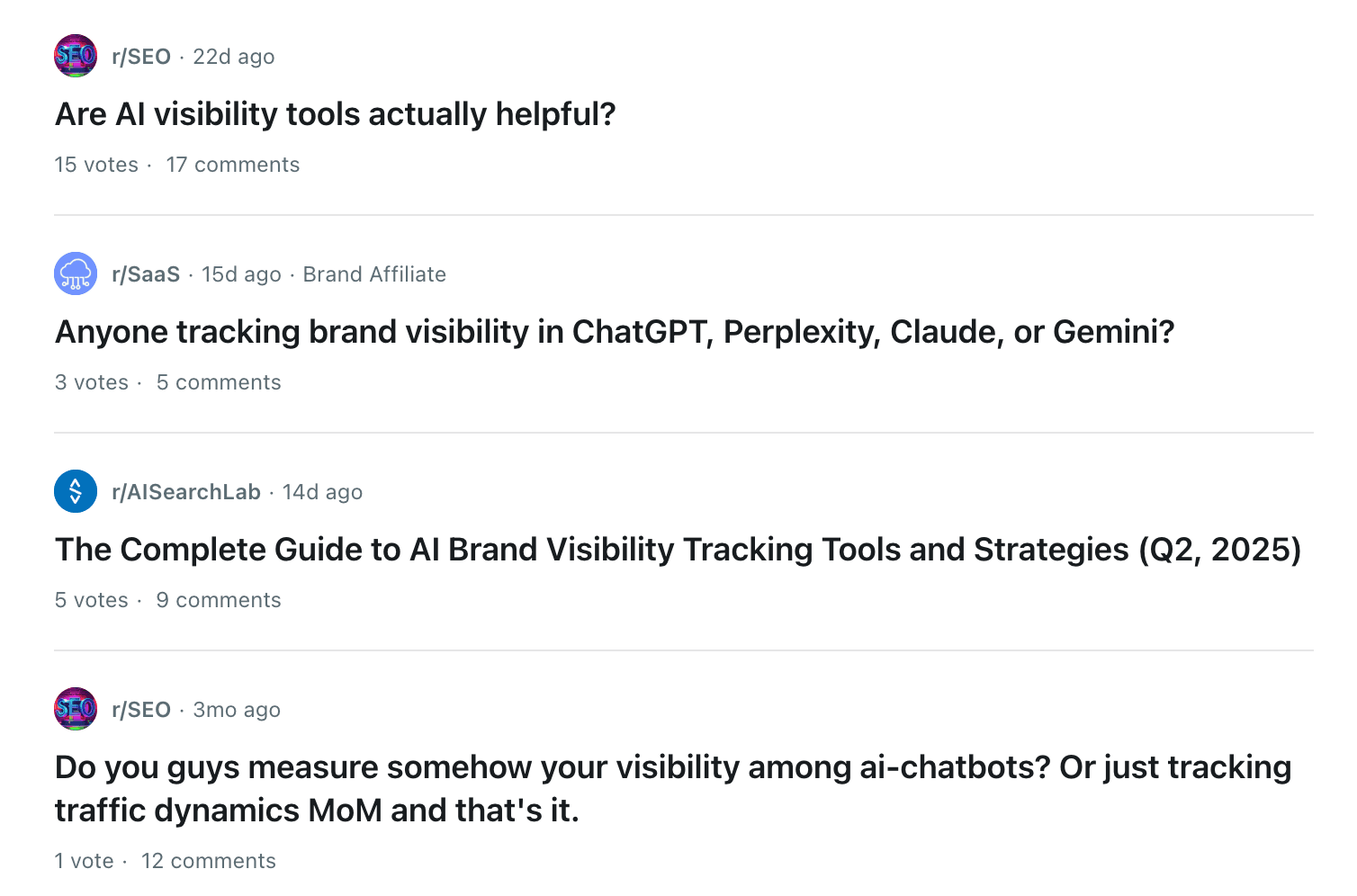
I can then participate in these threads, read comments, and use this information to create resonating marketing assets.
Strategic participation
- Be extremely authentic and honest — Reddit users don’t tolerate marketing
- Start with founder or employee participation using personal accounts
- Spend two to three weeks just participating in relevant subreddits without promoting anything
- Follow the 9:1 rule — nine helpful comments for every promotional one
- Build a branded account to host AMAs (Ask Me Anything) sessions and create a space for people to connect
For example, HubSpot has a dedicated r/hubspot that helps them further foster their community.
It’s a great way to see what people really think about your products, promote new features, and build trust.
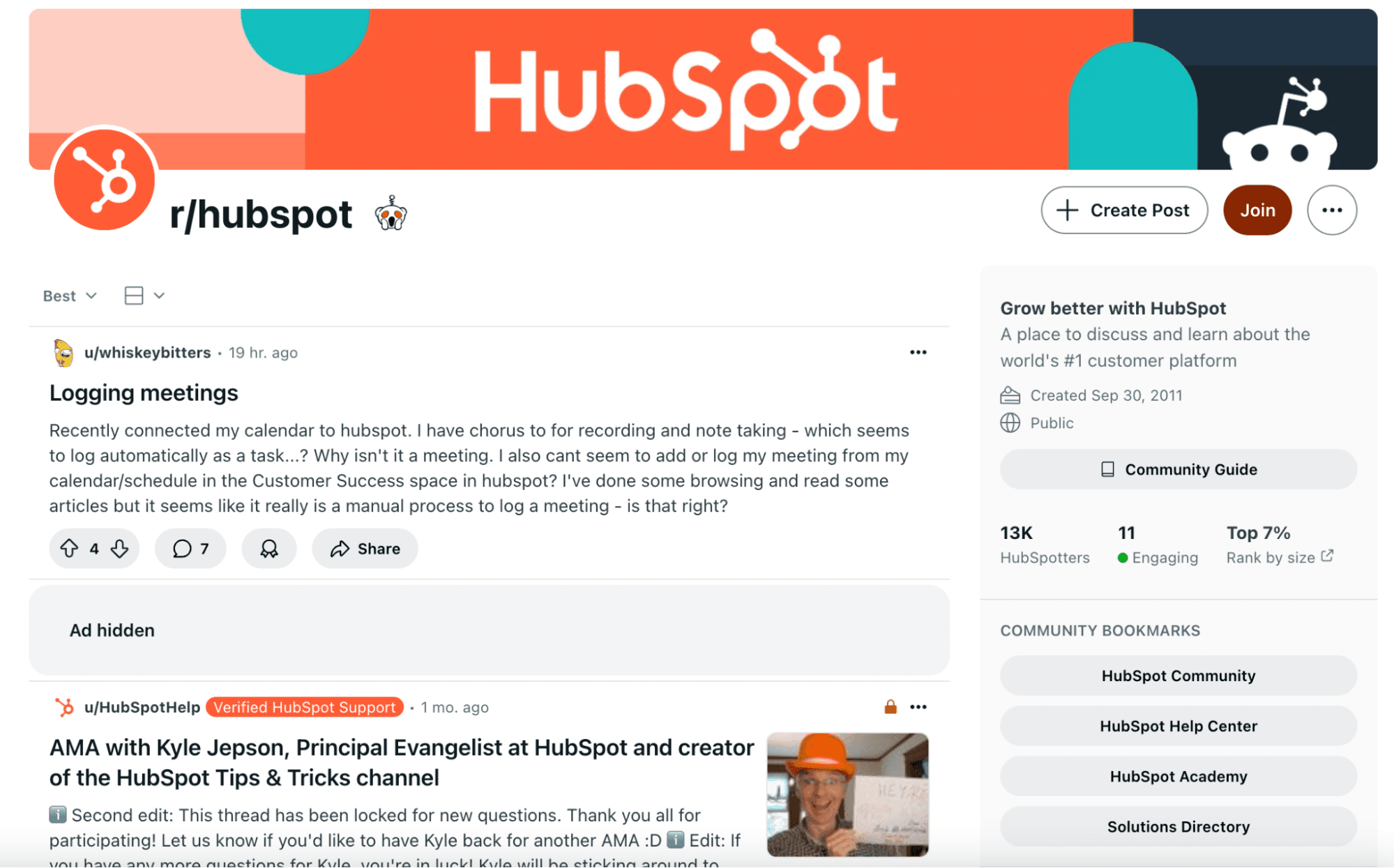
3. Branded communities
Branded communities let you build an audience space that you actually control. You set the rules, guide the conversation, and don't fight algorithms to engage your audience.
Think RevenueCat's SubClub community, where users connect, troubleshoot, and share growth strategies for subscription apps.
It serves both as a window into user needs and a channel for sharing marketing and product updates.
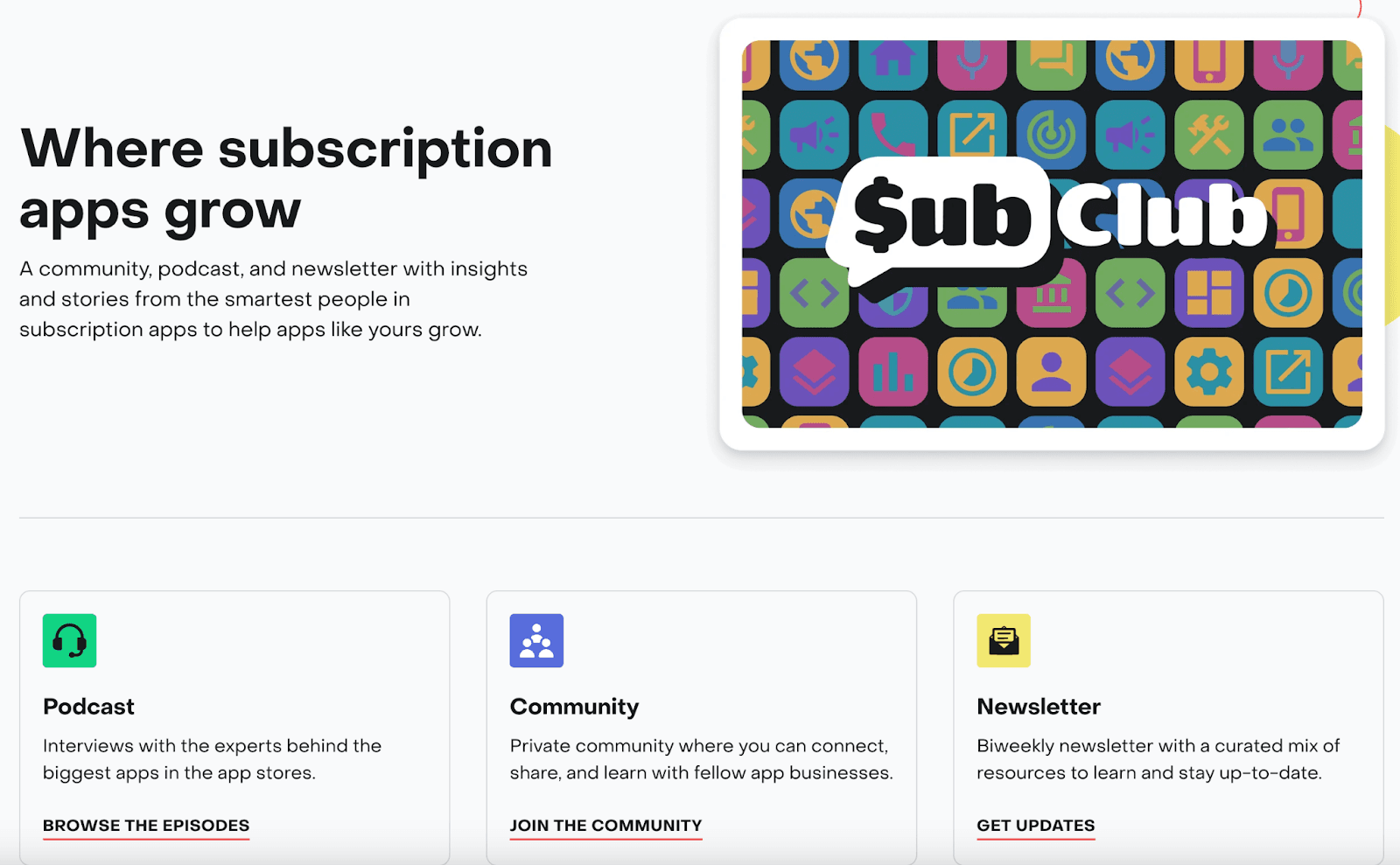
Building a community requires commitment. But it pays off in visibility that extends beyond clicks.
Here’s how you can do it:
- Pick a platform that matches your audience's habits (Discord, Circle, Slack, or a traditional forum)
- Start with value people can't get elsewhere: exclusive resources, direct access to experts, or peer networking
- Assign a dedicated community manager to maintain momentum and enforce guidelines
- Create consistent rituals like weekly threads, monthly AMAs, or quarterly meetups
4. Quora
Quora is another community platform that gives you direct access to audiences already asking questions.
With around 400 million monthly active users, it’s a great way to source ideas and interact with your customers.
Here's how to leverage Quora for your marketing:
- Search for questions directly related to problems your product solves
- Write detailed answers that showcase your expertise
- Include a relevant link back to your site at the end of your answer if it fits
- Add your professional credentials to your profile to build immediate trust
For example, I’ve instantly found several unanswered questions related to AI visibility.
This gives me a perfect opportunity to share my expertise and recommend our product.
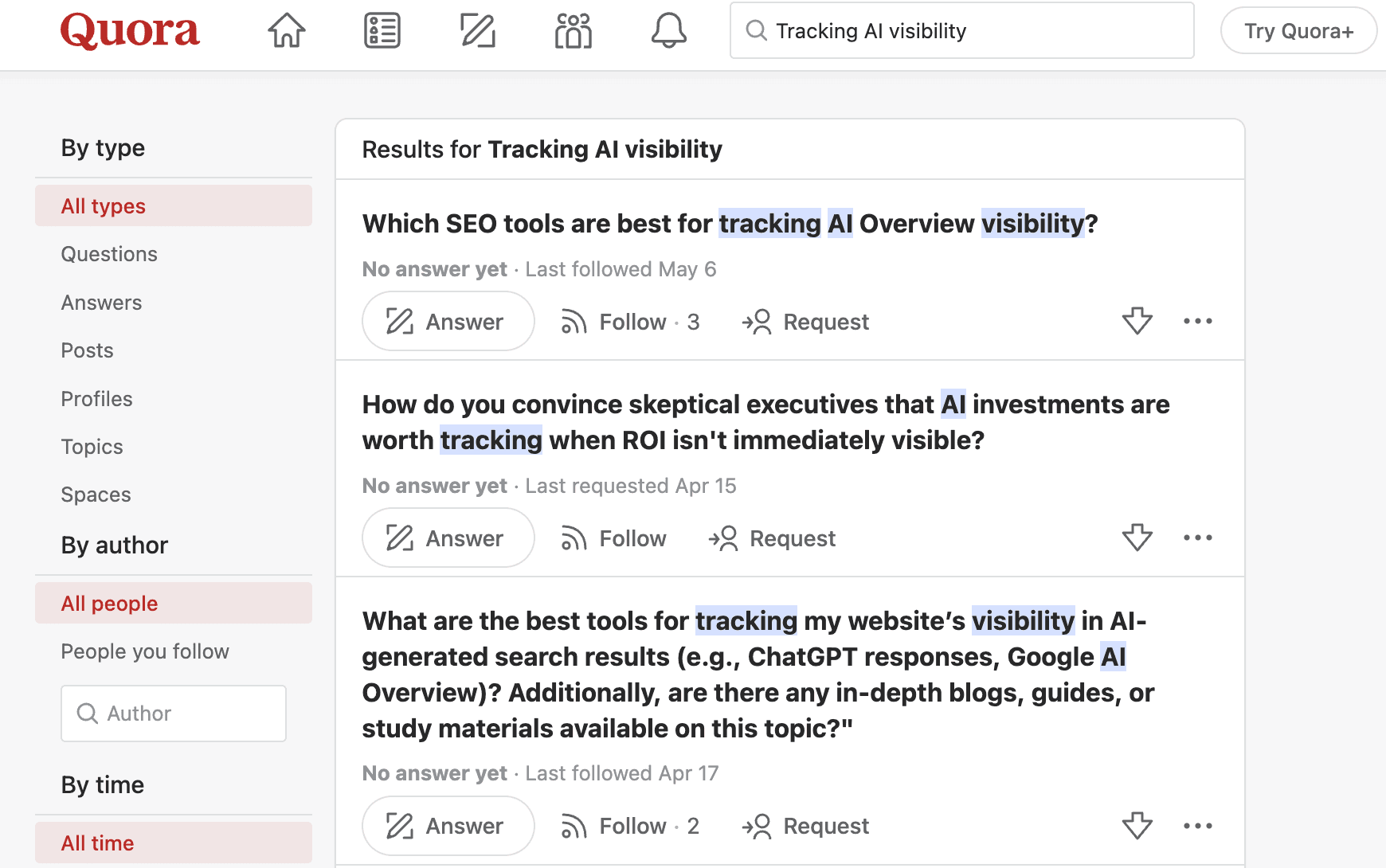
5. AI search engines
AI search platforms are driving business value in the form of mentions and traffic.
The real surprise?
According to Semrush's research, visitors coming from AI search tools convert 4.4x better than traditional organic search visitors.
They arrive informed about your products and ready to take action.
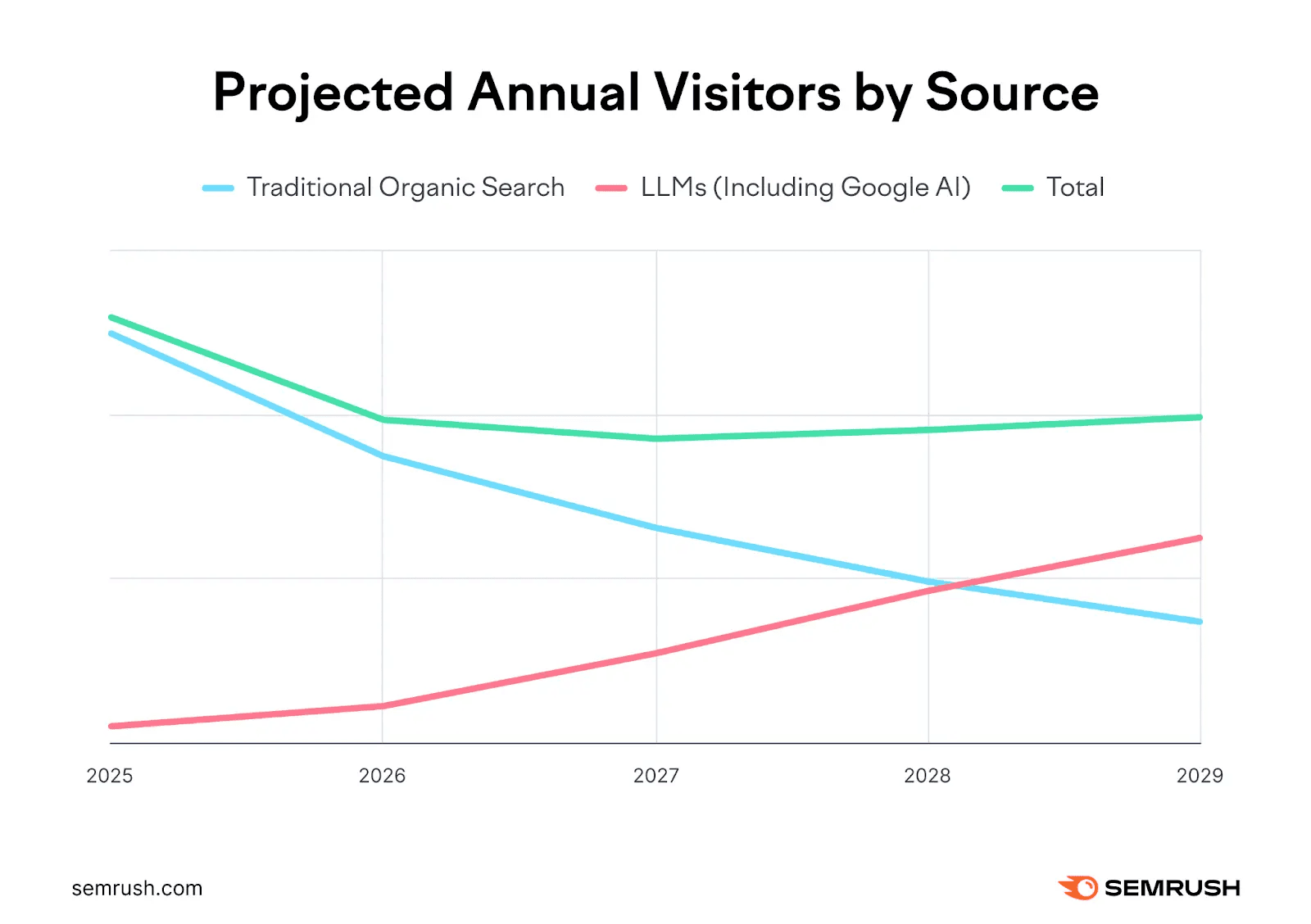
To appear in AI answers, you need to implement generative engine optimization (GEO):
- Grow your overall brand authority with digital PR and employee-driven thought leadership
- Build your brand presence across multiple platforms like social media, forums, niche media publications, etc.
- Create authentic content that features data research, expert insights, and original opinions
- Structure your content with clear headings and Q&A-style sections that AI systems can easily extract
6. Google’s AI experiences
Google’s AI Overviews and AI Mode are among the key reasons we’re moving toward a zero-click world.
Yet they can still boost your brand’s visibility — even if they don’t always drive direct traffic.
For example, my research appeared first when I searched “Can AI content rank on Google?” This instantly established Semrush’s authority on the topic.
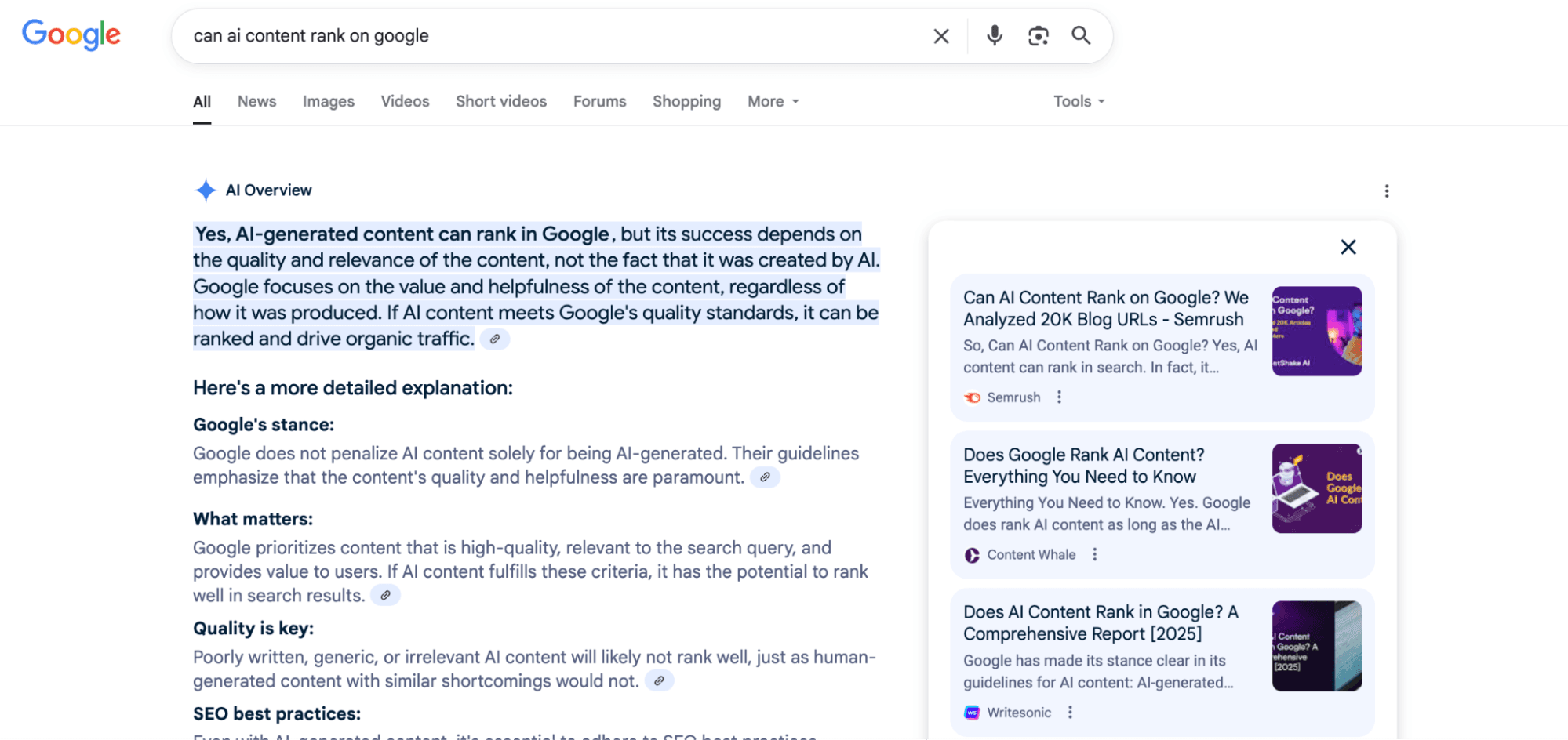
Here's how to maximize your visibility:
- Focus on question-based content: 35% of keywords that trigger AI Overviews on desktop are questions, with "how" and "what" leading the way
- Structure content for AI consumption: Just like when optimizing for LLMs, use clear, descriptive headers, answer questions directly in the first sentence after a header, and add FAQ blocks
- Build domain authority: Semrush found that Google’s AI features consistently cite top-ranking domains, so focus on creating high-quality content at scale and strengthening your site’s overall credibility.
- Create strategic product-led content: Semrush's AI Mode study found that commercial and transactional queries trigger AI Mode responses that are twice as long as informational ones, creating more opportunities for your brand to be mentioned
7. Email newsletters that feel human
Email newsletters are making a comeback, delivering instant value in a short, digestible format.
At Semrush, I've seen our newsletter engagement rates remain strong even as website traffic fluctuates.
For example, we saw great results — both in engagement and direct conversions — with our GoodContent Tips newsletter.
The approach was simple: I shared content marketing advice based on my personal experience and recommended Semrush tools where they genuinely added value.
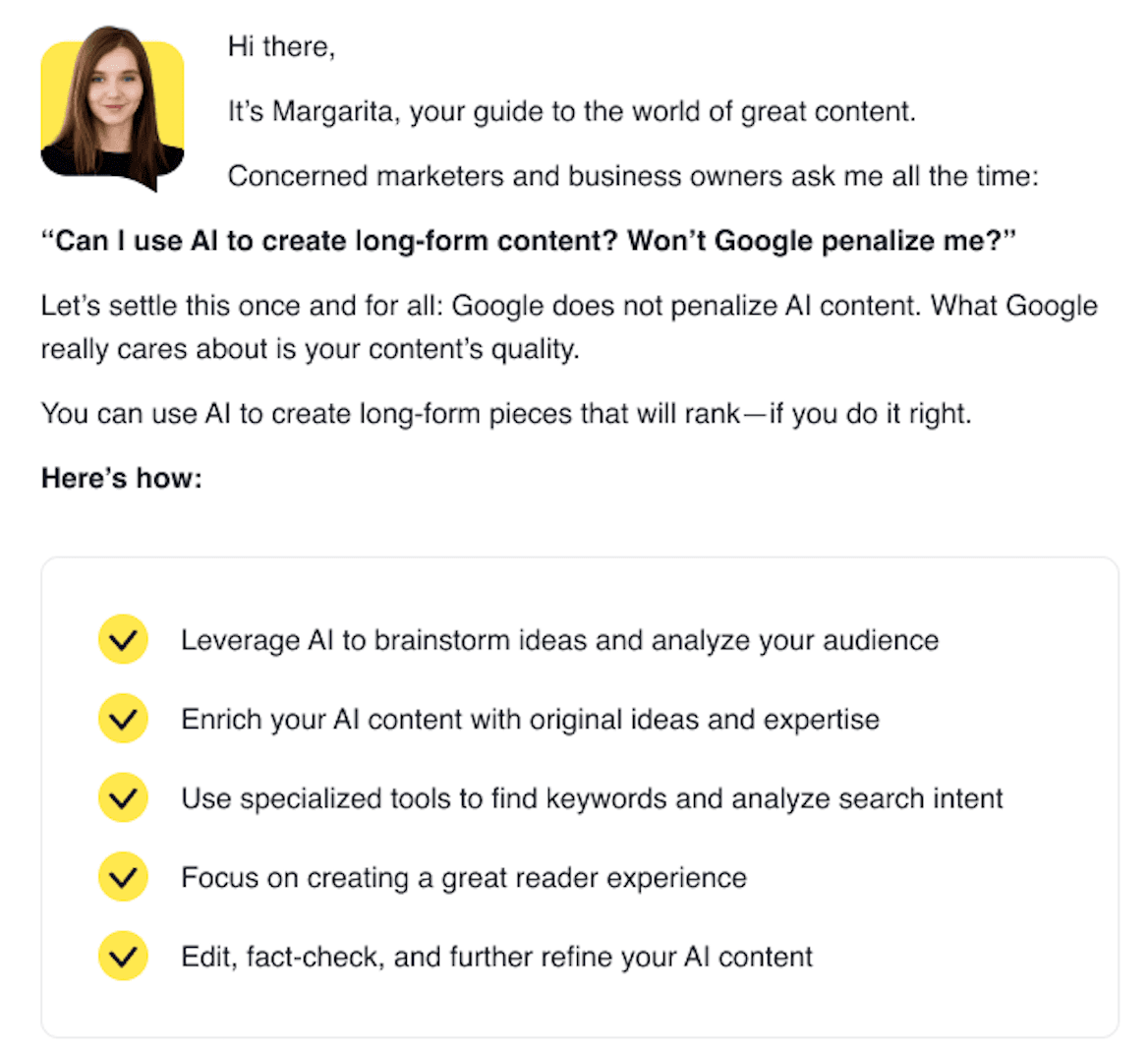
The rise of newsletter platforms and dedicated tools like Substack, beehiiv, and ConvertKit shows how much audiences value curated content delivered directly to them.
A great example of this in action is the Superhuman newsletter, written by the company’s founder.
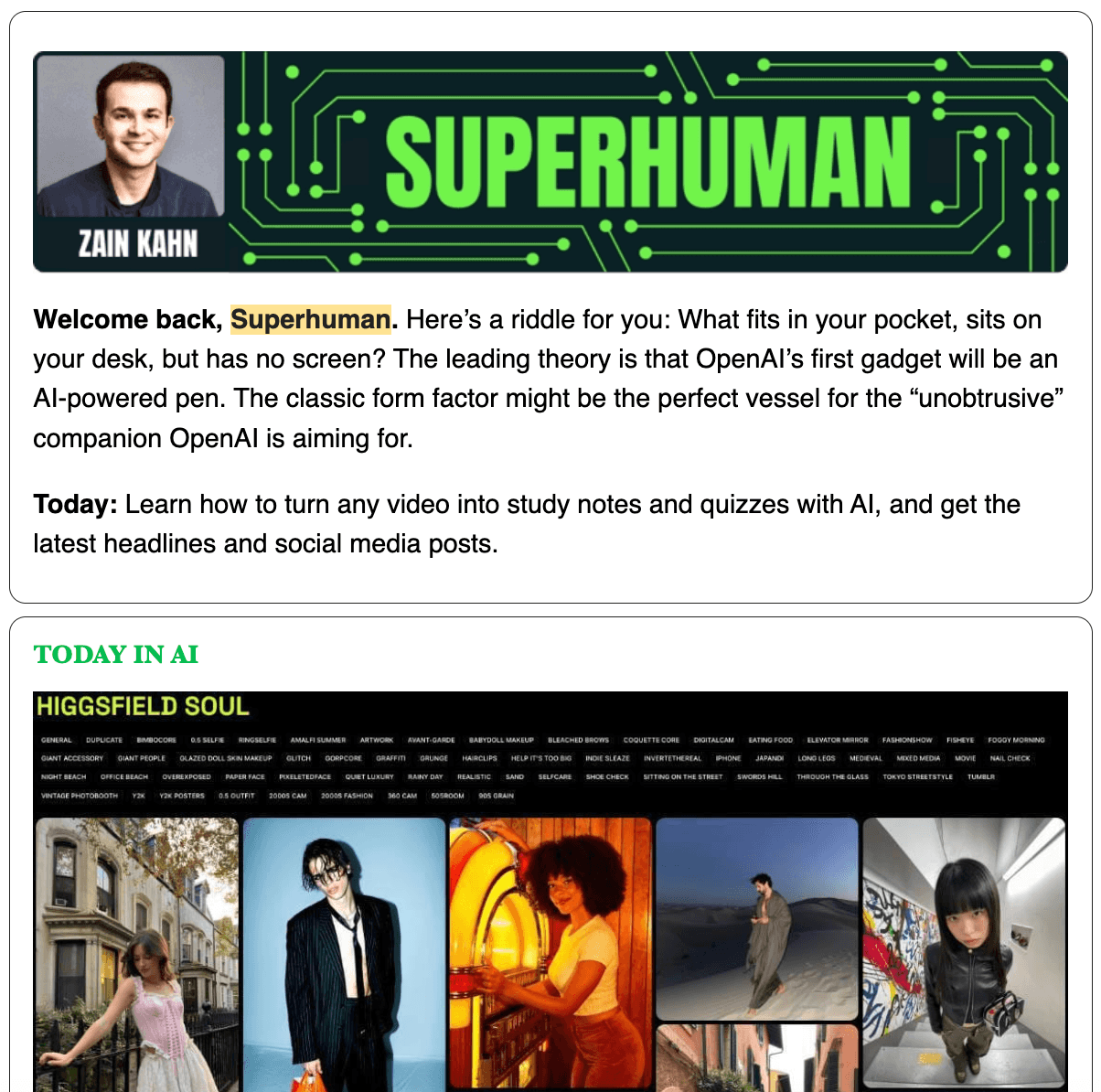
I love how it delivers regular updates on important AI developments while preserving a human approach.
8. YouTube, TikTok, and other video-first platforms
Video content now shows up everywhere, from traditional Google search results to AI-generated answers.
For example, YouTube is the second most cited source in Google AI Overviews, accounting for 18.8% of all citations.
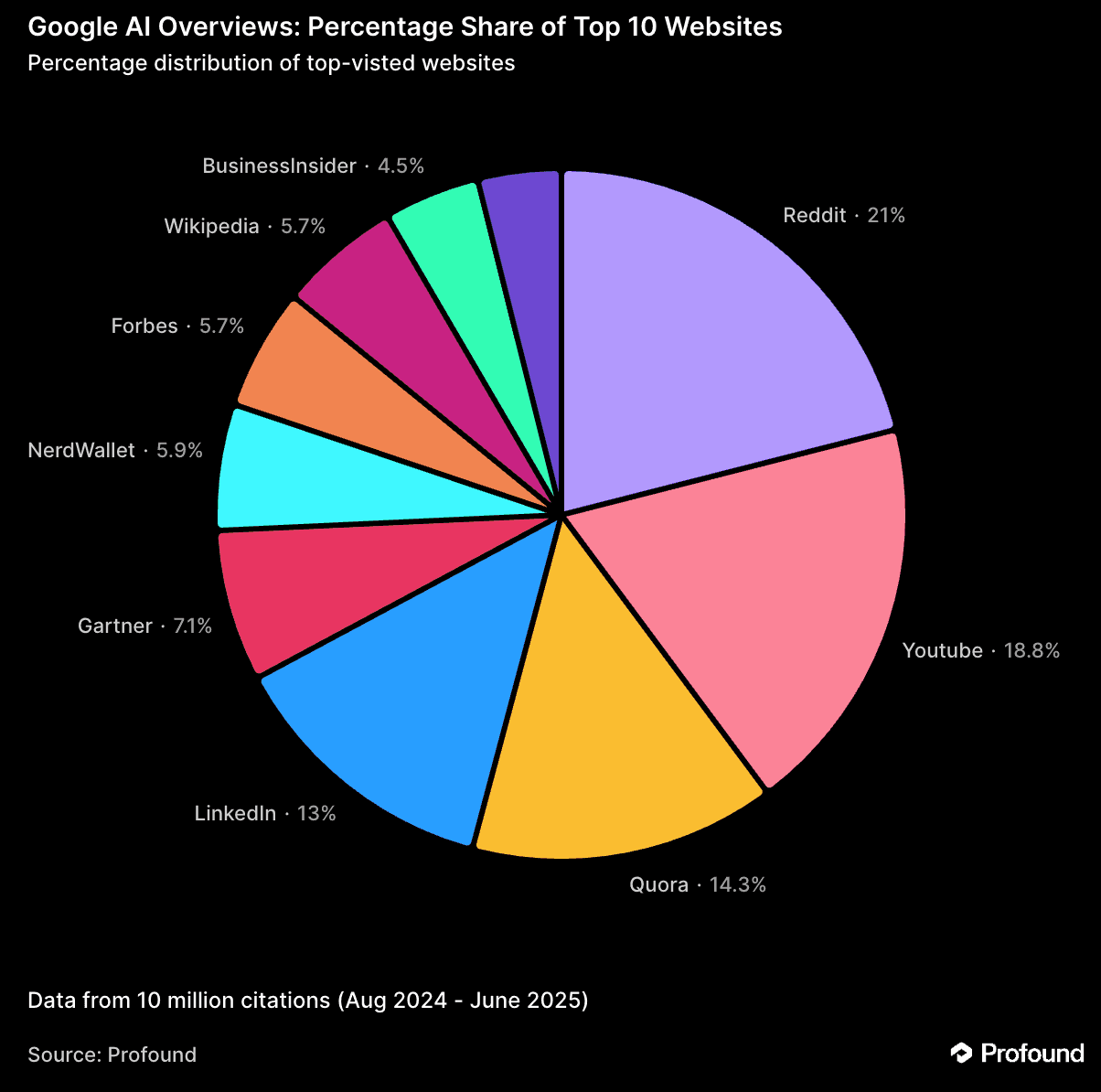
This means a single video can create multiple visibility touchpoints without users ever visiting your website.
Short-form video is especially powerful.
At Semrush, our TikTok series featuring Chris the Digital Marketer has shown that even B2B content can thrive in formats traditionally seen as B2C territory.
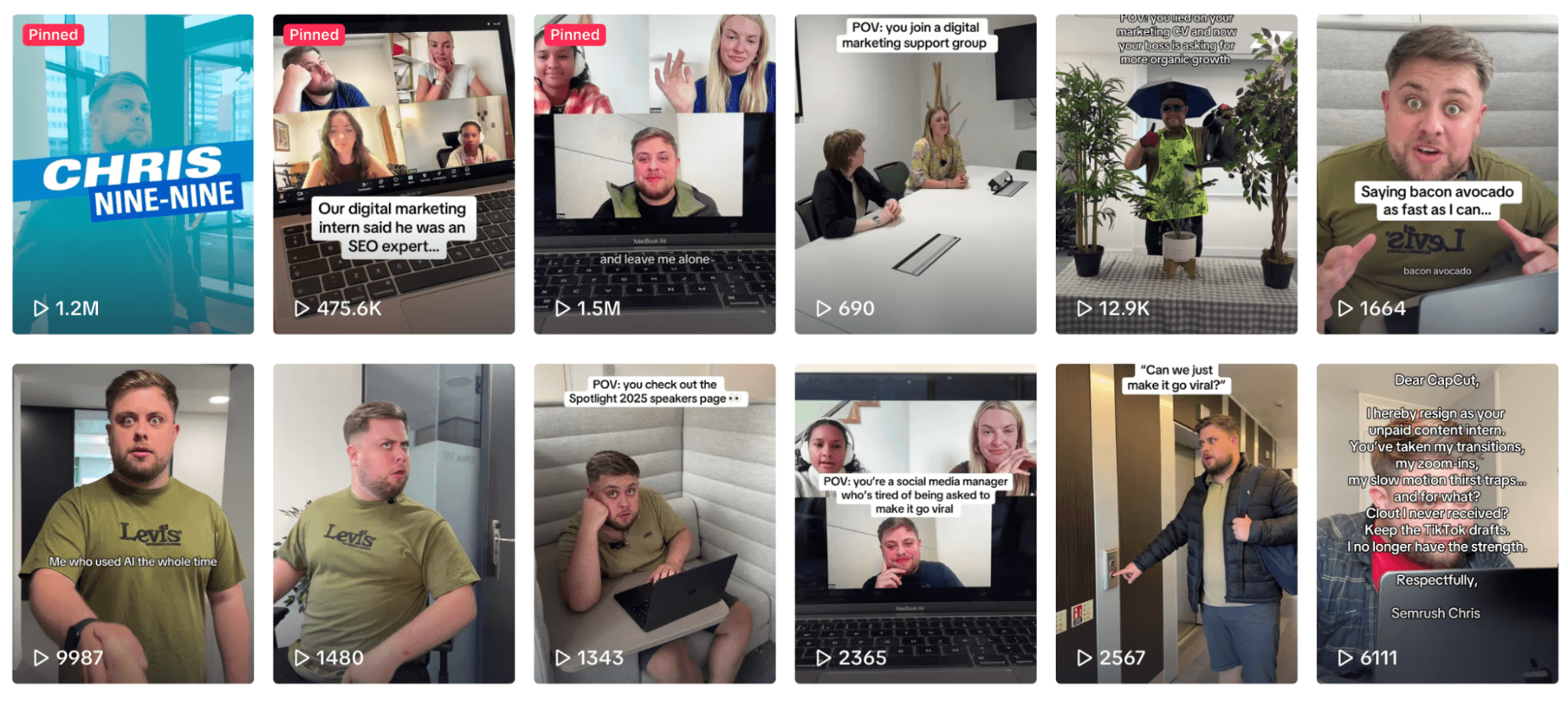
This approach helps us connect with audiences on a personal level and build awareness beyond clicks.
9. Partnering with niche creators
Partnering with niche creators has always been important.
Now, it's simply a must as people increasingly trust individuals over corporate content:
81% of customers say they’re more likely to buy from brands that are authentic.
For example, our recent AI visibility webinar with Emilia Möller drew thousands of registrations and lots of social buzz.
Because of her deep expertise, we both attracted people and created amazing content.
The best part?
We've been tagged in multiple posts summarizing the webinar takeaways — an amazing outcome for organic visibility.
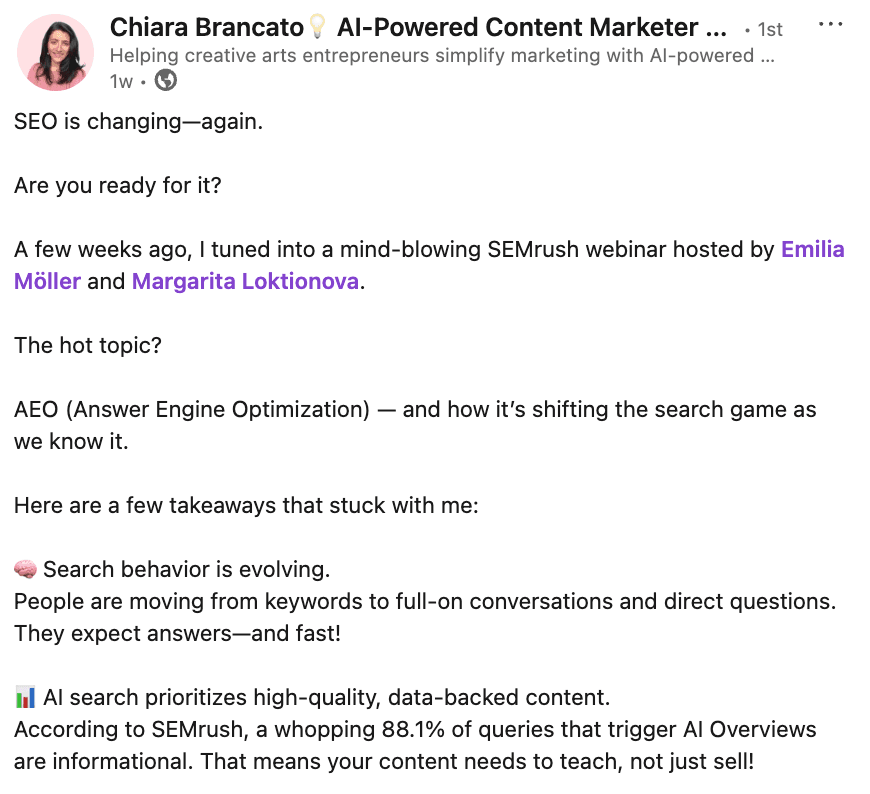
To make such partnerships work:
- Focus on experts with engaged followers, not just big numbers
- Build truly collaborative content, not just sponsored posts
- Let creators use their authentic voice
- Look beyond click metrics to engagement and brand sentiment
10. Podcasts
"Let's start a podcast" has become a bit of a meme, but it remains one of the best ways to reach decision-makers who don't have time to read.
The secret to success?
Just like with every other format on this list, you need to offer something unique, valuable, and authentic.
I can personally vouch for this.
While at Refinitiv, I worked on the Sustainability Perspectives podcast, where we invited industry leaders from our target companies to share their expertise.
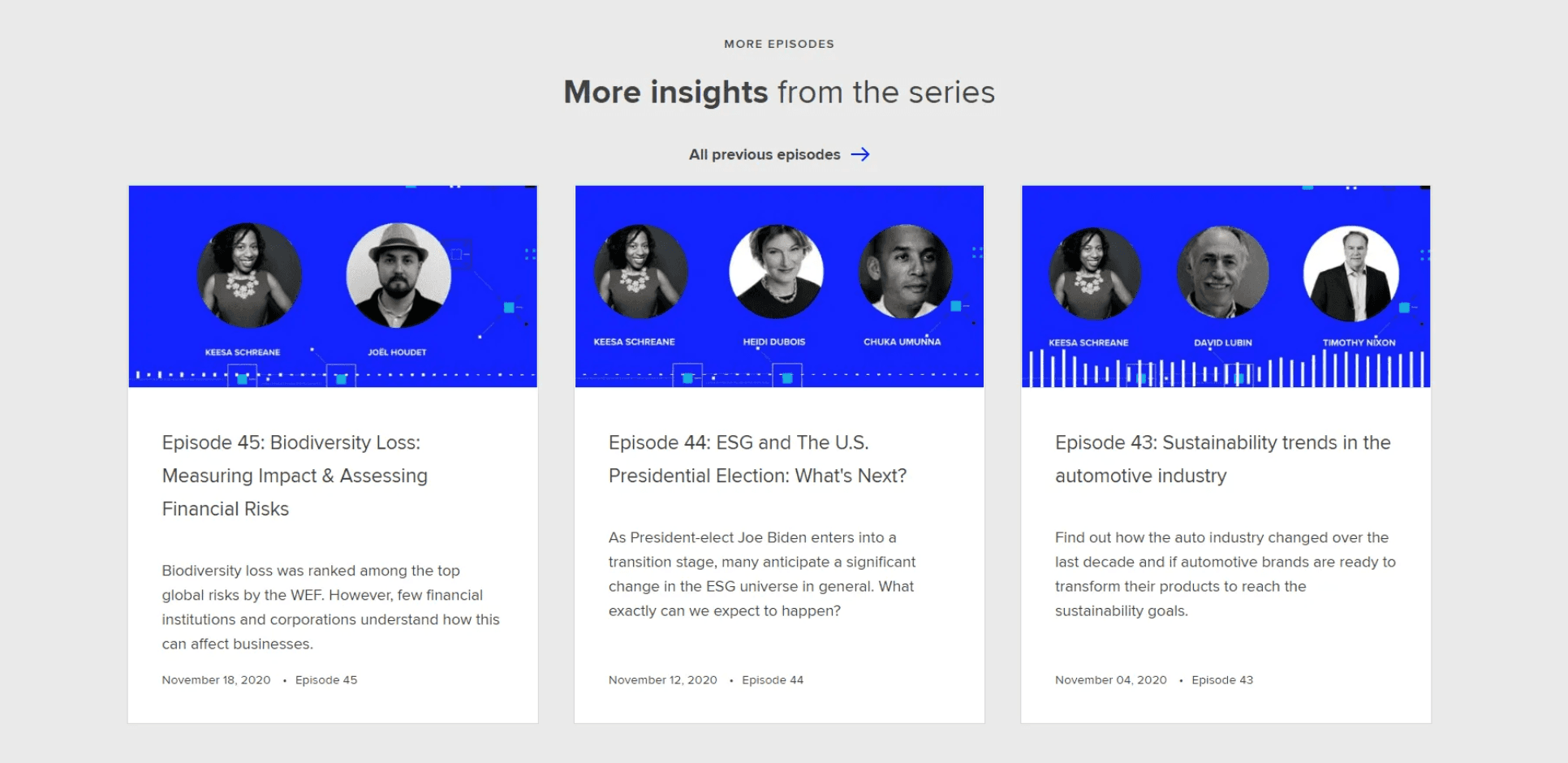
What surprised us was how these conversations opened doors: some executives from target accounts even began reaching out to us.
And we received company inquiries that specifically mentioned the podcast.
To achieve the same results:
- Inject your personality into the podcast and take a creative approach.
- Focus on a specific niche where you can establish real authority
- Create a format that showcases your guests' expertise, not your product
- Repurpose episodes into blog posts, social clips, and newsletter content
Visibility beyond clicks: The channel mix
The old approach to B2B visibility was simple: rank in Google, drive traffic, convert visitors.
Today's reality is more complex but potentially more rewarding.
The most successful brands won't be the ones with the most traffic.
They'll be the ones whose expertise is recognized, referenced, and recommended across the entire digital ecosystem — from LinkedIn posts to podcast episodes, Reddit threads to AI citations.
So stop obsessing over traffic drops and start building a presence where your audience makes decisions.
That's the visibility strategy that works in a zero-click world.
Relato helps you stay visible.
Subscribe to the Relato newsletter for clear takes, practical tips, and real examples to grow demand in a zero-click world.